
What is Software Testing Traceability Matrix, Its Types & Significance?
February 17th, 2024
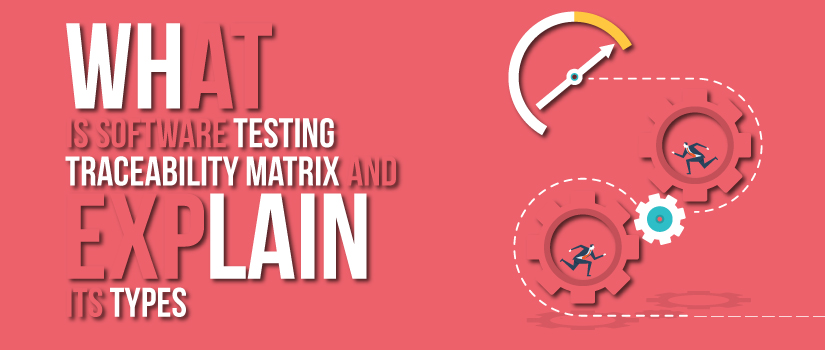
It serves as a verification tool to confirm that all software requirements, as defined in the requirements specification document, are covered by test scenarios and cases.
The matrix facilitates identifying missing tests, understanding the impact of changes, and ensuring comprehensive test coverage.
By maintaining traceability from requirements through to test cases and defects, STMs provide clear visibility into the test coverage, project progress, and quality assurance process, aiding in effective project management and delivery.
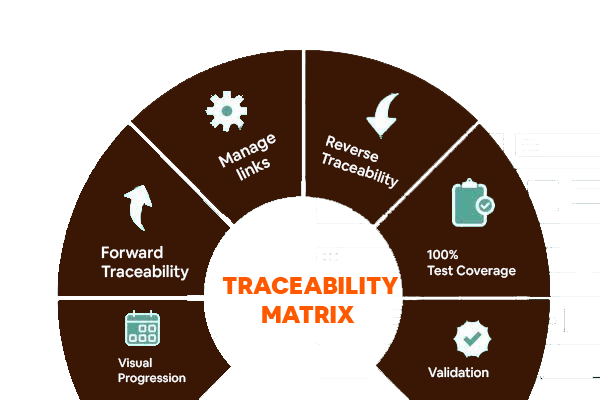
Benefits of Using Traceability Matrix
The Software Testing Traceability Matrix (STM) is critical for several technical and project management reasons:
- Ensures Coverage: STM guarantees that all requirements are tested, minimizing the risk of untested functionality being released. It systematically matches requirements with test cases, ensuring comprehensive coverage.
- Impact Analysis: It facilitates efficient impact analysis by identifying which test cases are affected by changes in requirements, thereby streamlining regression testing and reducing the risk of introducing defects.
- Defect Traceability: STM links defects to their corresponding requirements and test cases, making it easier to pinpoint the source of defects, understand their impact, and prioritize fixes.
- Project Management: It gives stakeholders a transparent overview of testing progress and requirement coverage, aiding in project tracking, planning, and decision-making.
- Compliance and Audit: For projects under regulatory scrutiny, STM demonstrates due diligence and adherence to quality standards by providing auditable evidence of requirement coverage and testing.
- Efficiency in Test Maintenance: By clearly linking requirements to test cases, STMs simplify the maintenance of test suites, especially in agile and rapidly changing environments.
- Communication: It enhances communication among team members by providing a clear and common understanding of what needs to be tested, the testing scope, and the rationale behind test case selection.
Types of Software Testing Traceability Matrix
Mentioned below are the key types of software testing traceability matrixes:
Forward Traceability
Forward traceability focuses on mapping requirements to test cases. It ensures that every requirement has corresponding test cases designed to validate it. This type of traceability ensures completeness in testing efforts by confirming that all specified functionalities are covered by test cases.
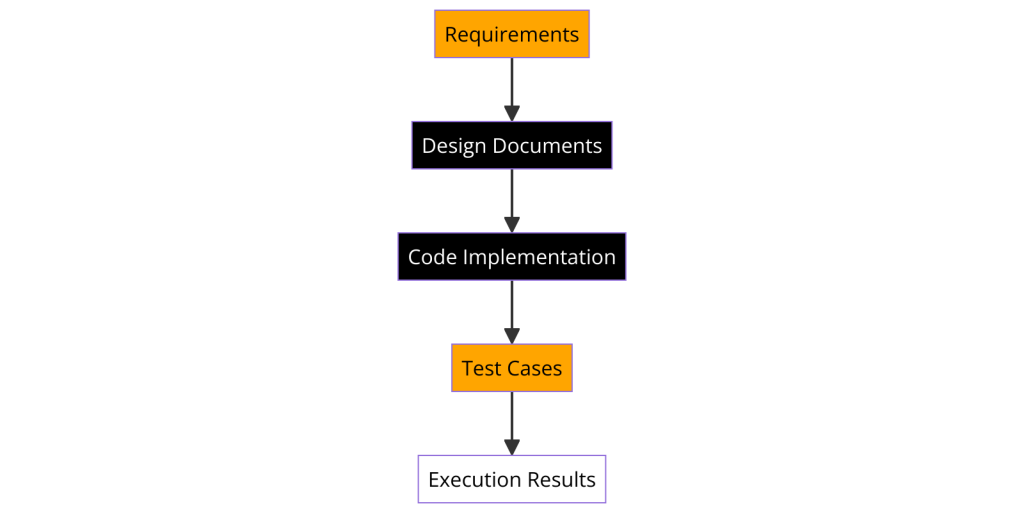
Backward Traceability
Backward traceability involves tracing test cases back to the originating requirements. It ensures that every test case has a clear association with one or more requirements. This type of traceability helps in validating the necessity of each test case and identifying any redundant or obsolete ones.
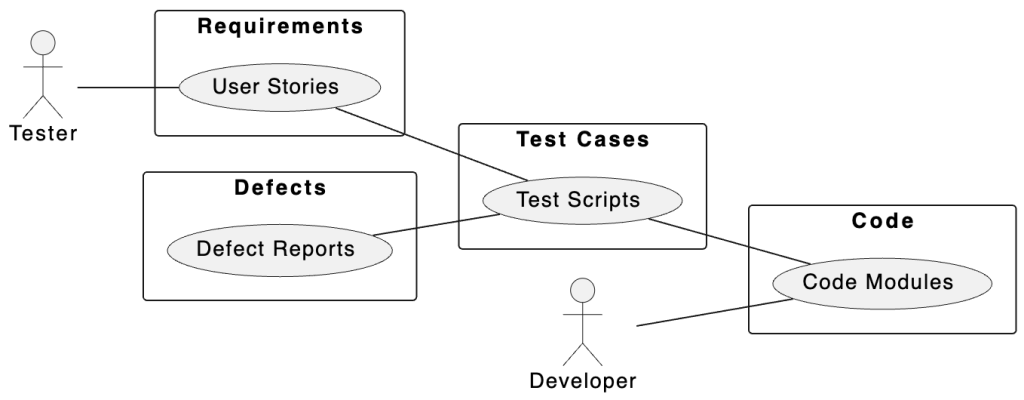
Bidirectional Traceability
Bidirectional traceability combines both forward and backward traceability, establishing a two-way mapping between requirements and test cases.
It ensures not only that each requirement has corresponding test cases but also that each test case is linked back to the originating requirements. This comprehensive approach provides a thorough understanding of the testing coverage and its alignment with the project requirements.
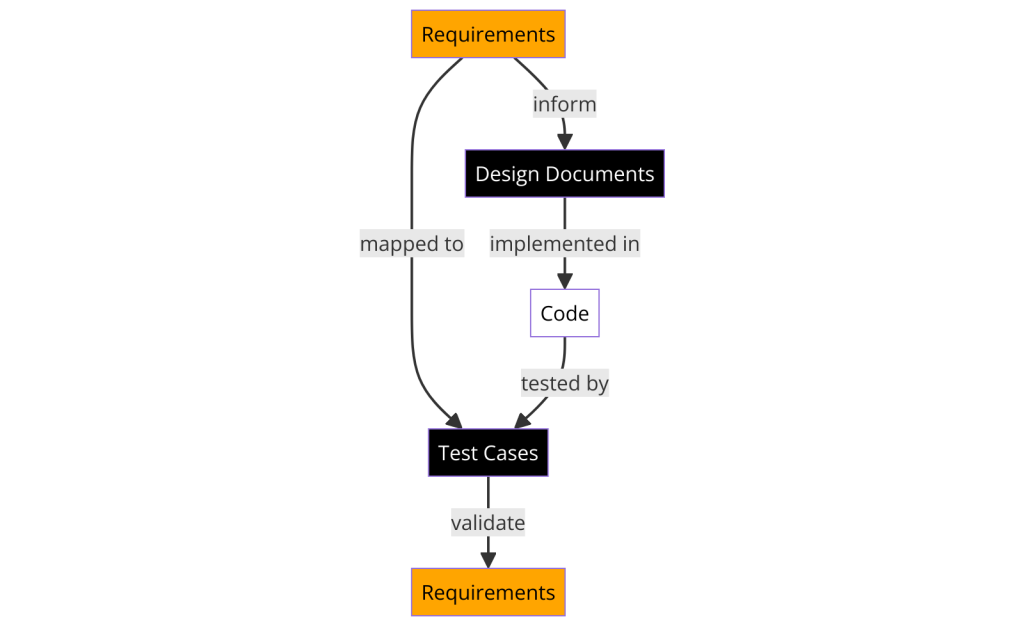
Vertical Traceability
Vertical traceability extends beyond requirements and test cases to encompass other artifacts throughout the software development lifecycle, such as design documents, code modules, and user manuals.
It enables stakeholders to trace the evolution of various elements across different phases of development, ensuring consistency and coherence in the final product.
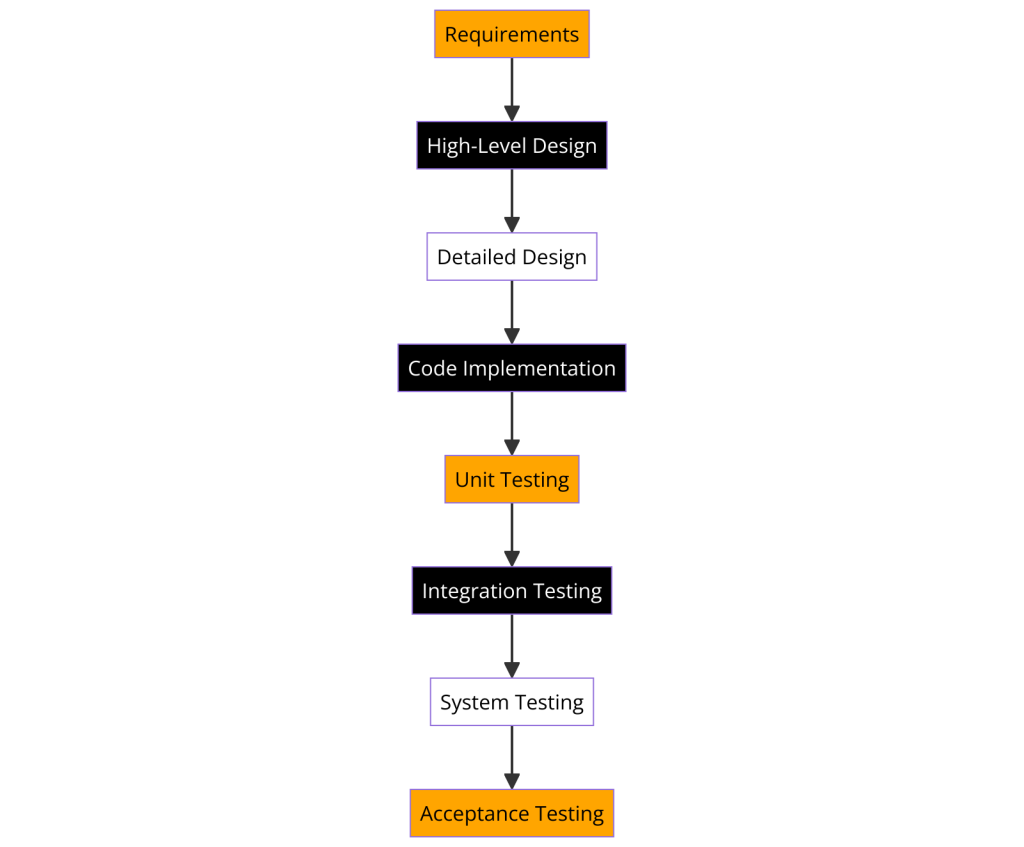
Horizontal Traceability
Horizontal traceability focuses on establishing relationships between artifacts within the same development phase. For example, it may involve linking test cases to each other based on shared test objectives or dependencies.
This type of traceability enhances collaboration and coordination among testing teams, ensuring that efforts are synchronized and aligned toward common goals.
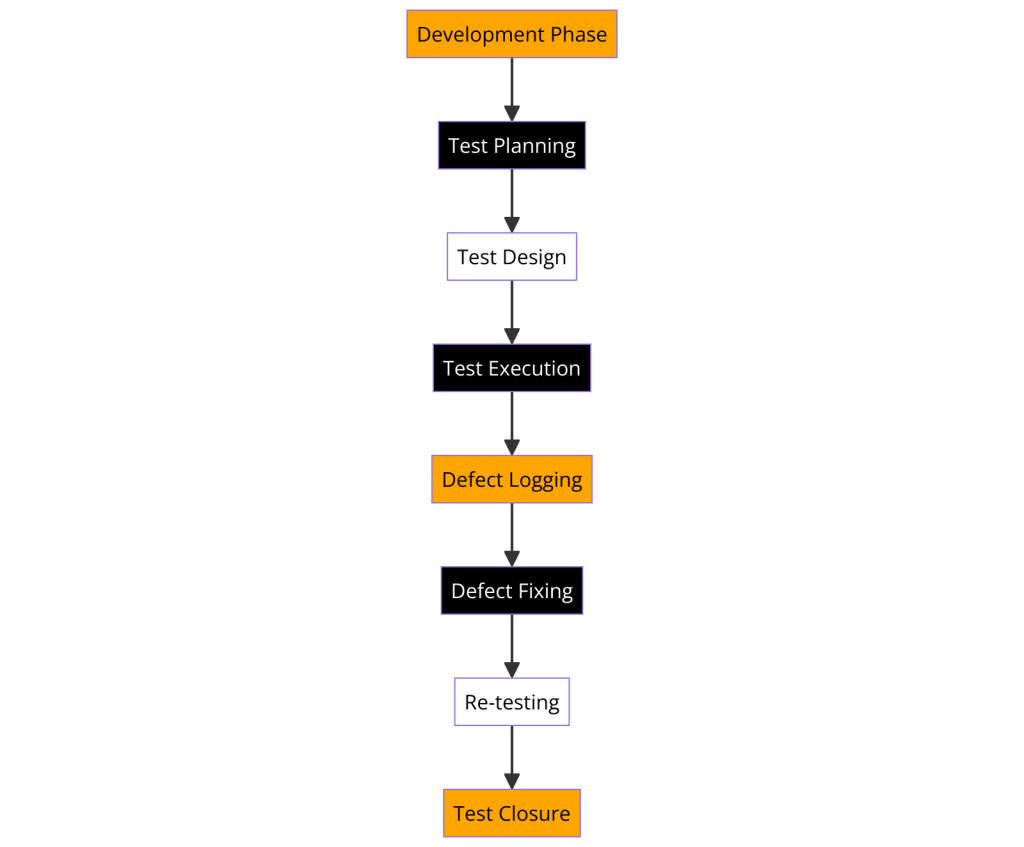
Basic Parameters to be included in TM (Traceability Matrix)
- Requirement ID
- Type and description
- Test case no:
- Requirement coverage in a number of test cases
- Test design status and the execution of the test status
- Unit test cases
- Integration test cases
- System test cases
- Risks
- UAT (User Acceptance Test) Status
- Defects and current status
- Start Early: Incorporate traceability at the beginning of the project. Early integration ensures that all requirements are captured and traced throughout the project lifecycle.
- Maintain Consistency: Use a consistent format for documenting requirements, test cases, and defects. Consistency makes it easier to trace and manage these artifacts as the project evolves.
- Automate Where Possible: Utilize tools that support traceability and automate the process of linking requirements, test cases, and defects. Automation reduces manual errors and saves time.
- Regular Updates: Keep the traceability matrix updated with changes in requirements, test cases, and defect status. Regular updates ensure the matrix remains an accurate reflection of the project state.
- Involve Stakeholders: Engage project stakeholders in the traceability process. Their input can provide additional insights, ensuring comprehensive coverage and alignment with project objectives.
- Review and Audit: Periodically review the traceability matrix for completeness and accuracy. Audits can uncover gaps in test coverage or discrepancies in the traceability links.
- Use Unique Identifiers: Assign unique identifiers to requirements, test cases, and defects. Unique IDs simplify the process of tracing and reduce confusion.
- Prioritize Traceability for Critical Requirements: Focus on establishing clear traceability for high-priority and critical requirements. Ensuring these requirements are thoroughly tested and traced is vital for project success.
- Train the Team: Educate your team on the importance of traceability and how to effectively use the traceability matrix. Well-informed team members are more likely to maintain accurate and useful traceability records.
- Leverage Traceability for Impact Analysis: Use the traceability matrix to conduct impact analysis for proposed changes. Understanding the relationships between requirements, test cases, and defects helps in assessing the potential impact of changes.
How to Create TM (Traceability Matrix)?
Template for Traceability Matrix
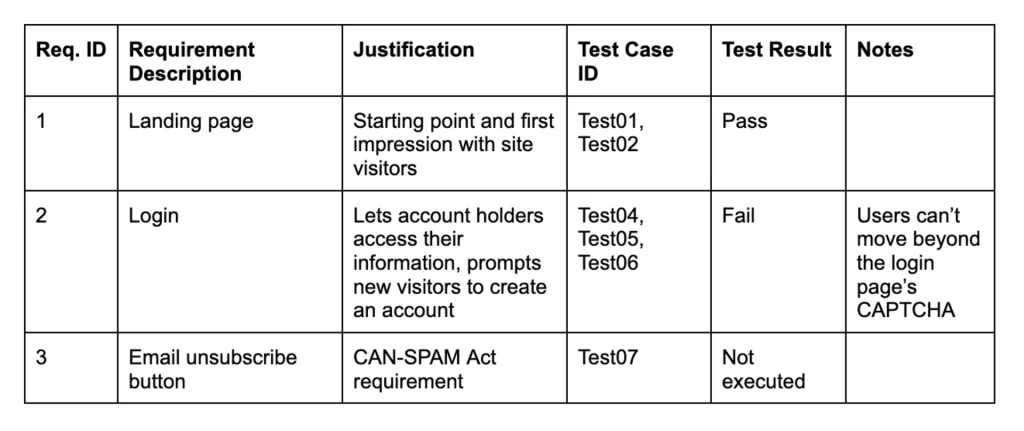
Traceability Matrix Workflow
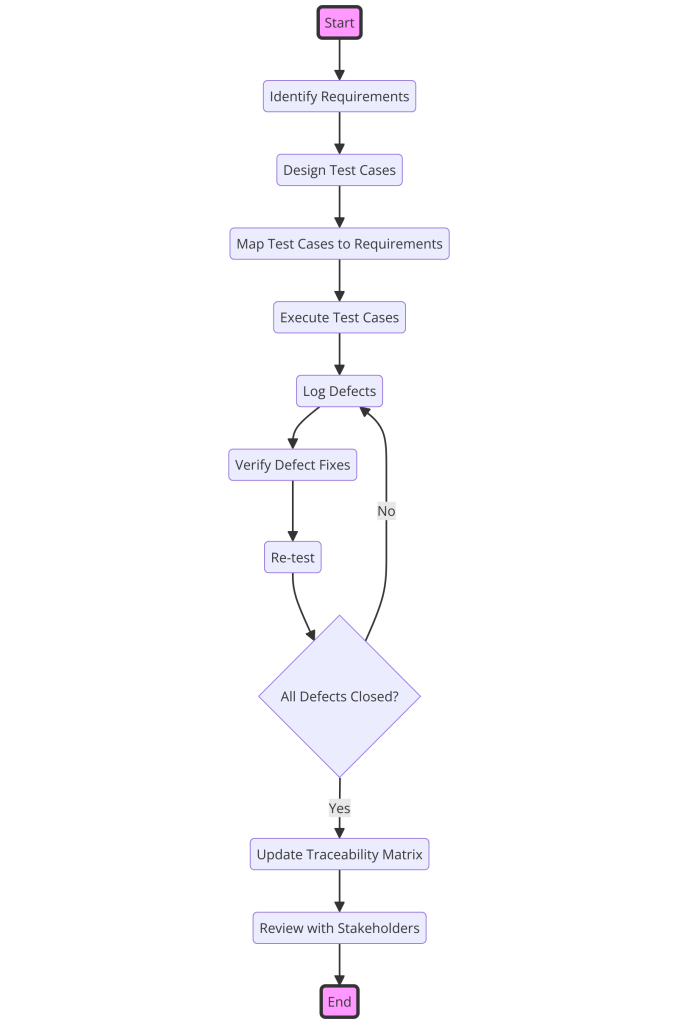
Conclusion
A Software Testing Traceability Matrix is a fundamental tool for managing and tracking the testing process in software development projects. By establishing clear correlations between requirements, test cases, and other artifacts, an STM enhances transparency, facilitates impact analysis, and ensures comprehensive test coverage.
 Understanding the different types of traceability matrices—forward, backward, bidirectional, vertical, and horizontal—empowers teams to tailor their testing approach according to project requirements and objectives. Ultimately, leveraging traceability matrices effectively contributes to delivering high-quality software products that meet stakeholder expectations and industry standards.
Understanding the different types of traceability matrices—forward, backward, bidirectional, vertical, and horizontal—empowers teams to tailor their testing approach according to project requirements and objectives. Ultimately, leveraging traceability matrices effectively contributes to delivering high-quality software products that meet stakeholder expectations and industry standards.
Know More: 10 Best Software Testing Tools For 2020


 Software Testing Events
Software Testing Events App Testing
App Testing Web App Testing
Web App Testing Game Testing
Game Testing Automation Testing
Automation Testing Load Testing
Load Testing Security Testing
Security Testing Performance Testing
Performance Testing Hire a Tester
Hire a Tester





